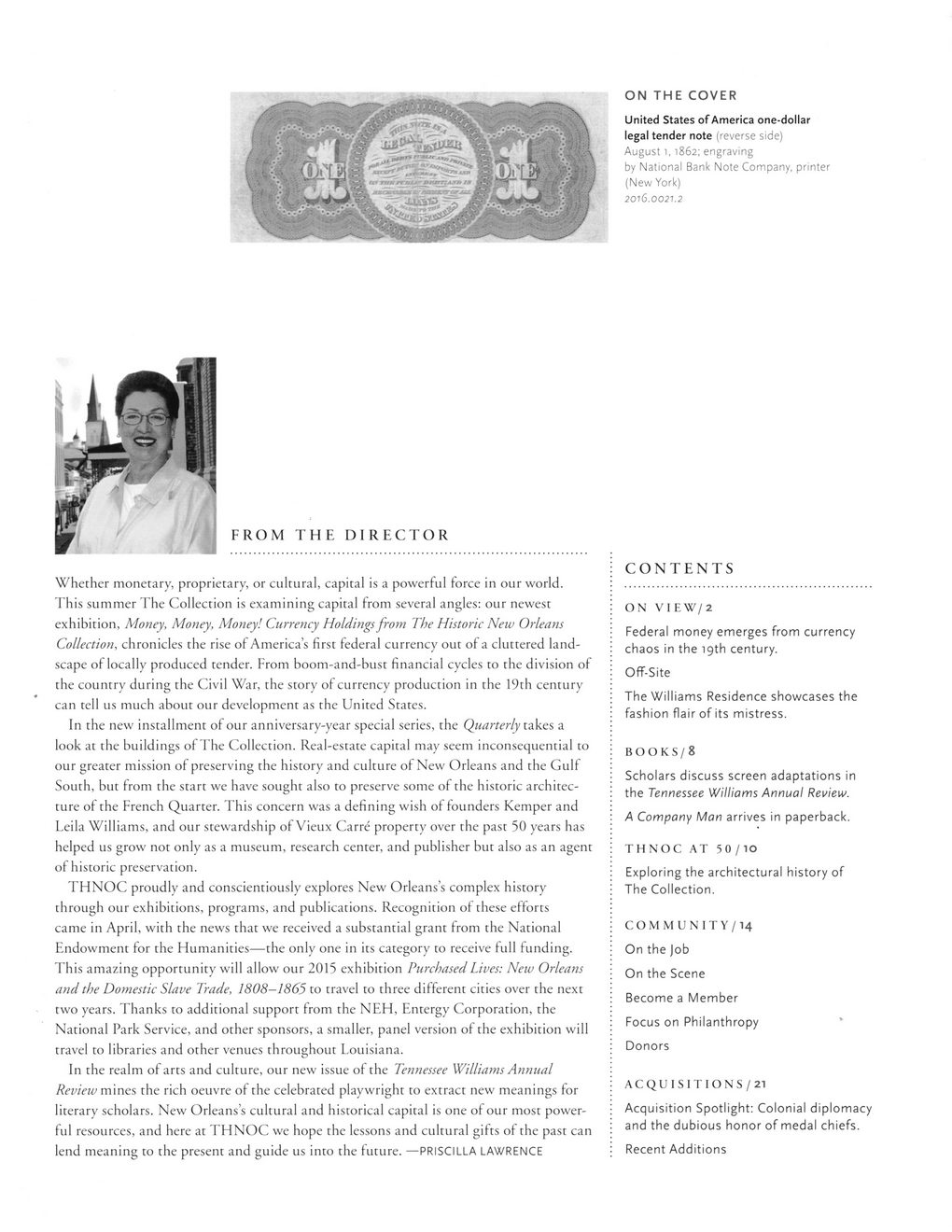This text was obtained via automated optical character recognition.
It has not been edited and may therefore contain several errors.
ON THE COVER United States of America one-dollar legal tender note (reverse side) August i, 1862; engraving by National Bank Note Company, printer (New York) 2016.0021.2 FROM THE DIRECTOR Whether monetary, proprietary, or cultural, capital is a powerful force in our world. This summer The Collection is examining capital from several angles: our newest exhibition, Money, Money, Money! Currency Holdings from The Historic New Orleans Collection, chronicles the rise of America’s first federal currency out of a cluttered landscape of locally produced tender. From boom-and-bust financial cycles to the division of the country during the Civil War, the story of currency production in the 19th century can tell us much about our development as the United States. In the new installment of our anniversary-year special series, the Quarterly takes a look at the buildings of The Collection. Real-estate capital may seem inconsequential to our greater mission of preserving the history and culture of New Orleans and the Gulf South, but from the start we have sought also to preserve some of the historic architecture of the French Quarter. This concern was a defining wish of founders Kemper and Leila Williams, and our stewardship of Vieux Carre property over the past 50 years has helped us grow not only as a museum, research center, and publisher but also as an agent of historic preservation. THNOC proudly and conscientiously explores New Orleans’s complex history through our exhibitions, programs, and publications. Recognition of these efforts came in April, with the news that we received a substantial grant from the National Endowment for the Humanities—the only one in its category to receive full funding. This amazing opportunity will allow our 2015 exhibition Purchased Lives: New Orleans and the Domestic Slave Trade, 1808-1865 to travel to three different cities over the next two years. Thanks to additional support from the NEH, Entergy Corporation, the National Park Service, and other sponsors, a smaller, panel version of the exhibition will travel to libraries and other venues throughout Louisiana. In the realm of arts and culture, our new issue of the Tennessee Williams Annual Review mines the rich oeuvre of the celebrated playwright to extract new meanings for literary scholars. New Orleans’s cultural and historical capital is one of our most powerful resources, and here at THNOC we hope the lessons and cultural gifts of the past can lend meaning to the present and guide us into the future. —PRISCILLA LAWRENCE CONTENTS ON VIEW/2 Federal money emerges from currency chaos in the 19th century. Off-Site The Williams Residence showcases the fashion flair of its mistress. BOOKS/8 Scholars discuss screen adaptations in the Tennessee Williams Annual Review. A Company Man arrives in paperback. THNOC AT 50 /TO Exploring the architectural history of The Collection. COMMUNITY /14 On the Job On the Scene Become a Member Focus on Philanthropy Donors ACQUISITIONS/21 Acquisition Spotlight: Colonial diplomacy and the dubious honor of medal chiefs. Recent Additions

New Orleans Quarterly 2016 Summer (002)